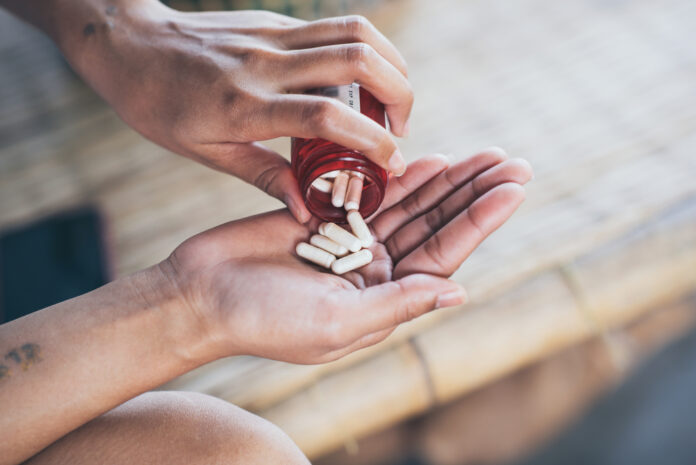Navigating the world of prescription medications without insurance can be daunting. With the rising costs of drugs, many individuals are forced to choose between their health and their finances. Fortunately, there are numerous strategies and resources available to obtain medications at a reduced cost or even for free. This article explores various options to help you find affordable prescription medications without insurance.
Consider Generic Medications
One of the most effective ways to reduce medication costs is by opting for generic drugs. Generic medications contain the same active ingredients as their brand-name counterparts and are equally effective but are typically up to 85% cheaper.
When your doctor prescribes medication, ask if a generic version is available. Pharmacists can also inform you about generic alternatives that can save you significant amounts on your prescriptions.
Explore Patient Assistance Programs (PAPs)
Many pharmaceutical companies offer Patient Assistance Programs to help individuals who cannot afford their medications. These programs may cover some or all of the medication costs and usually require proof of income and lack of prescription insurance.
Eligibility criteria often include:
- Meeting certain income requirements
- Being a U.S. citizen or legal resident
- Lacking prescription drug coverage
Applications for PAPs often need to be filled out by both you and your doctor. It’s important to note that you’ll need to reapply periodically to continue receiving assistance.
Utilize Government Programs
Medicaid
Medicaid provides prescription coverage to eligible low-income individuals and families. While Medicaid offers prescription coverage, specifics can vary by state, including which medications are covered and the amount of copays.
Medicare Part D
For individuals over 65 or those with certain disabilities, Medicare Part D is an option that offers prescription drug coverage. Additionally, the Extra Help program can assist with Medicare prescription costs like premiums and copays if you meet certain income and resource limits.
State Pharmaceutical Assistance Programs
Some states have their own programs to help residents afford prescription medications. These programs often assist those who do not qualify for Medicaid and may focus on specific populations or conditions.
Shop Around at Different Pharmacies
Prices for the same medication can vary significantly between pharmacies. Independent, chain, and even online pharmacies may offer different prices. By comparing prices at various pharmacies, you can find the most affordable option.
Online tools and apps can help you compare prices and find the best deals. Some pharmacies also offer savings programs or special discounts on generic medications.
Utilize 340B and Nonprofit Pharmacies
340B Pharmacies
These pharmacies partner with community health centers through a federal program to provide medications at significantly reduced costs. If you’re receiving care at a qualifying health center, ask if they participate in the 340B program.
Nonprofit Pharmacies
Nonprofit pharmacies, often funded by donations and grants, may offer free or low-cost medications to those in need. Organizations like St. Vincent de Paul operate such pharmacies to help uninsured individuals access necessary medications.
Consider Online and Mail-Order Pharmacies
Online and mail-order pharmacies can offer medications at lower prices, especially when ordering a 90-day supply. This not only reduces the cost per dose but also decreases the frequency of copays. It’s important to ensure that the pharmacy is legitimate and requires a valid prescription.
Take Advantage of Prescription Discount Cards and Coupons
Prescription discount cards and coupons can provide substantial savings on medications. Programs like GoodRx and BuzzRx offer discounts that can be used at many pharmacies nationwide.
For example, BuzzRx provides a free discount card that can save you up to 80% on prescription medications. Similarly, GoodRx offers coupons and discount cards that can lower the cost of prescriptions significantly.
Keep in mind that while these discounts can be substantial, using them instead of insurance may prevent the cost from counting toward your deductible. Always compare the discounted price with your insurance copay to find the best deal.
Seek Assistance from Nonprofit Organizations
Several nonprofits offer assistance programs to help cover prescription drug costs. Organizations like the Partnership for Prescription Assistance and the Patient Advocate Foundation’s CoPay Relief program can provide support based on eligibility.
Additionally, some nonprofits focus on specific conditions. For instance, the Leukemia and Lymphoma Society and the American Diabetes Association offer resources and financial assistance for individuals with those conditions.
Explore Amazon Pharmacy Options
Amazon Pharmacy provides services for purchasing medications with or without insurance. For Amazon Prime members, the Prime prescription savings benefit offers discounts of up to 80% off generic drugs and 40% off brand-name medications.
Even without a Prime membership, you can use Amazon Pharmacy to access competitive out-of-pocket prices on medications. The platform allows you to compare prices and offers the convenience of home delivery.
Talk to Your Doctor About Lower-Cost Alternatives
Your healthcare provider can be a valuable resource in finding affordable medications. They may be able to:
- Prescribe lower-cost generic medications
- Provide samples of medications
- Enroll you in manufacturer assistance programs
- Adjust your treatment plan to include more affordable options
Never hesitate to discuss financial concerns with your doctor—they can help you find solutions that won’t compromise your health.
Conclusion
Affording prescription medications without insurance can be challenging, but numerous resources and strategies are available to help reduce costs. By exploring generic options, assistance programs, discount cards, and open communication with your healthcare provider, you can access the medications you need without breaking the bank.
Taking the time to research and utilize these resources can make a significant difference in your healthcare expenses. Remember, your health is important, and there are options available to ensure you receive the necessary treatments without undue financial burden.


